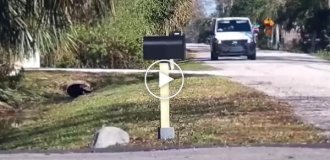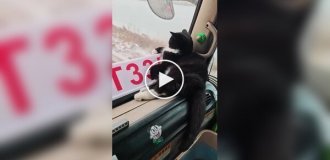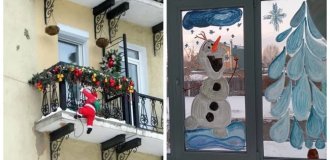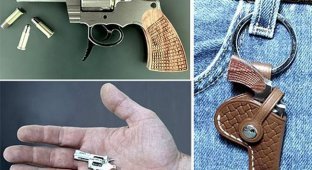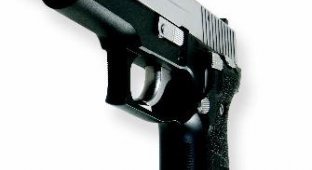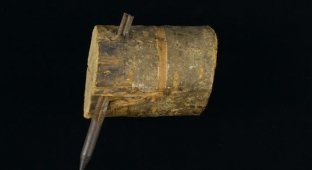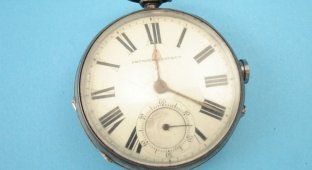German pistols of World War II - ideal or myth (9 photos + 1 video)
German pistols of the Second World War, which were in service with the Wehrmacht, today are often idealized and collected; lovers and connoisseurs of weapons on forums often call them an example of design thought and its embodiment in metal. Was this for real or just another hoax?
Nazi Germany was seriously preparing for war with the Soviet Union. Both the industrial, scientific, and human resources of their own country, as well as the potential of all the enslaved countries of Europe, were involved. Austria and the Czech Republic, along with the Reich, were a forge of weapons, a repair base for military equipment and weapons of the Wehrmacht. Tanks, planes, guns, as well as a variety of small arms for the ground forces came in a continuous stream to the Eastern Front, only to remain melted, twisted scrap metal on Russian soil. German pistols of the Second World War, which were in service with the Wehrmacht, today are often idealized and collected; lovers and connoisseurs of weapons on forums often call them an example of design thought and its embodiment in metal. Was this for real or just another hoax?

Why do you need a gun?
The production of short-barreled weapons - pistols, later revolvers, which can be used with ease and convenience with one hand, to equip the armed forces is not a new idea. The first pistols were matchlock. With the advent of wheel-type, percussion-flint, capsule samples of the design of ignition of a powder charge, they became more common, although due to the complexity and labor-intensive manufacturing they were quite expensive weapons, used mainly as follows:
The weapon of cavalrymen who were uncomfortable using long guns in short-lived battles. However, such pistols were distinguished by a longer barrel length to increase the range of hitting the target. The great weight was compensated by the fact that it was not the rider who had to carry and carry the cavalry pistol.
Noble weapons, including dueling weapons. Such pistols were distinguished by both high quality, shooting accuracy, and expensive finishing that turned them into works of art.
Officer's weapon.
These pistols were smooth-bore, single-shot, and often misfired when firing, so for reliability and insurance in combat conditions, they tried to have two copies with them. Only in the middle of the 19th century did cartridge revolvers with a rifled barrel appear, allowing several accurate shots to be fired without reloading. Having such advantages, they never forced pistols out of history, despite the cult appeal, largely introduced into the consciousness later by American Westerns.
Since the end of the 19th century, weapons designers from different countries have been developing a self-loading pistol, also called an automatic pistol. The first production pistol of this type in history to enter service with the cavalry forces of Austria-Hungary was the Roth-Steyr M1907:
The operating principle is automatic with a movable barrel.
Caliber – 8 mm, cartridge – 8 x 19 mm.
Barrel length – 128 mm.
Magazine – 10 rounds.
Weight – 0.99 kg.
Produced from 1907 to 1914.
About 100 thousand copies were produced.
In World War II it was in service with Italian units.

The first successful example showed other countries the opportunity to arm their officers, junior officers, pilots, and tank crews with weapons that have many advantages over rifles:
Small size and weight, which allows you to carry a pistol for a long time without fatigue in a holster on your belt, from which you can quickly take it out, and does not interfere in cramped conditions - in a car, the cockpit of an airplane, tank, or other equipment.
Ease of handling, low inertia during use, compared to two-handed weapons.
Due to its low mass, it can be carried as a second, auxiliary weapon.
Experience of use in the First World War confirmed initial impressions and assumptions. It was convenient to shoot from a pistol in close combat, inside buildings, indoors, including moving up stairs, moving through bushes, dense forests, and to be worn secretly under clothing. Although pistols were inferior to rifles in terms of firepower, they were in many cases superior to them in effectiveness in battle, often making them indispensable.
German and Austrian weapon designers, we must give them their due, put a lot of effort and talent so that the pistols they created, and later the German machine guns of World War II, received worldwide recognition as reliable, effective weapons. By the way, one of their technical solutions back in the 30s of the 19th century was to increase the capacity of a replaceable extended magazine from 6 - 8 rounds to 12 - 20, which is also used in modern weapons.
Mauser, Walter, Luger
This is how, with capital letters, connoisseurs of good weapons call the well-known pistols that were in service with the police and the Wehrmacht during the last world war. And there are reasons for this. But, in order, about the most common models, the production of which amounted to hundreds of thousands of copies:
Luger (mod.1900). The pistol was developed in 1900. There are several modifications. The pistol of the 1903 model and 9 x 19 mm cartridges, when moving from caliber 7.65 to 9 mm, the manufacturing company DWM gave its own name Parabellum, which is often called all versions of this famous hand-held small arms, although after entering the Reichswehr of Kaiser Germany this name became receive only commercial products. 282 thousand copies of modifications of the Luger pistol (mod.1900) were produced.

Luger P08 - standard short-barreled weapon of the German army from 1908 to 1945. Weight with loaded magazine - only 876 g. Magazine - 8 rounds. About 3 million copies were released. All Luger brand pistols were produced from corrosion-resistant alloy steel and were distinguished by high-quality workmanship, durability, reliability of design, combat accuracy, and high penetrating ability of a bullet fired from it. Disadvantages include labor-intensive manufacturing, high cost, and sensitivity to contamination. During the Second World War, they remained in service with junior command personnel, armored and auxiliary vehicle crews. The officers switched to the more modern Walter pistol.

Walter P38 is a 9mm self-loading weapon. It was put into service in 1940. It was distinguished by high technical characteristics, which, in particular, is shown by the guaranteed service life of 10 thousand shots. Weight – 880 g. Magazine – 8 rounds.

Walter RR (1929), shortened, lighter version of Walter RRK (1931). Their characteristics, respectively: weight - 690/590 g, length - 170/155 mm, operating principle - blowback, magazine capacity - 8/7 rounds. The pistols were produced in four calibers from 5 to 9 mm. In total, about 1.2 million units were produced.

Mauser M 1910. Self-loading pistol for pocket carry. The modification, modified for World War II, was in service with the Wehrmacht. Caliber - 6.35/7.65 mm, weight - 0.5 kg, magazine - 9/8 rounds. About 380 thousand copies were released.

Mauser HSc. A pistol developed in 1936 for arming aviation and navy personnel. Weight - 0.7 kg. Length - 223 mm. Magazine - 8 rounds. More than 250 thousand units were produced.

Sauer 38H. It was not widespread. Mainly weapons of Wehrmacht and SS officers. Caliber – 7.65 mm. Weight – 0.7 kg. Magazine – 8 rounds.

German pistols of World War II were not the ideal weapons that gun enthusiasts and people who have never held one in their hands imagine. However, one cannot dispute the good quality, accuracy of the Luger models, and the compactness of the Walter, which were the most popular personal weapons of Wehrmacht officers and soldiers. This can be recognized by the fact that the soldiers of the Red Army willingly used such trophies, and amateurs and collectors still stimulate the resumption of Parabellum production with purchases.
